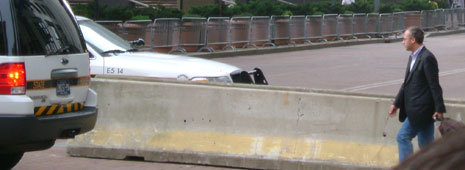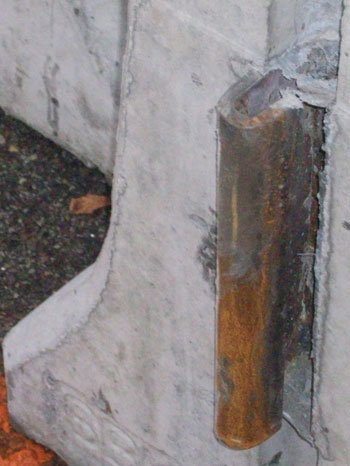Jersey barriers are ubiquitous structures existing on almost every type of road that has traffic movement. These are safety measures that help separate lanes of traffic, minimize damage to the vehicle and injuries to its occupants, and redirect the vehicle back into the traffic stream in the event of an accident or collision of the vehicle.
According to the American Heritage.com History’s Homepages on barrier information, Jersey barriers made their maiden appearance in the year 1946, on the treacherous and hazardous mountain paths of California’s Ridge Route Highway, which was the US route 99. This was a route frequented by truckers and the incidences of head-on collisions were high then. The California Division of Highways experimented with parabolic concrete median barriers along this route, and they noted a decline in the collision rate after deployment of the barriers.
However, for reasons best known to them, California Highway engineers did not pursue any further research and developments on concrete Jersey barriers for the next 20 years. Meanwhile, a prestigious publication, Engineering News-Record ran the California story, which set the stage for New Jersey Highway engineers to develop and implement the idea of their concrete median barriers in 1949. The barriers were 19-inch-high, with 30-inch-width and had concave parabolic faces on either side.
The successful initial attempts that brought down the accident rates considerably, wherever the Jersey barriers were deployed gave impetus to further research and detailed study regarding the materials used and the sizes of the barriers. Jersey barrier heights went up gradually go from 19 inches, to 20 inches and then the standard 32-inch height Jersey barriers that are in use even today. After numerous crash tests by engineers from different states and California in particular; they crash tested radio controlled automobiles, at various speeds and approach angles, using both steel guardrails and Jersey barriers, the results favored the Jersey barriers because these were effective in providing safety and had low maintenance costs. Soon the Jersey barriers lined many state highways in the US; Jersey barriers are evaluated using NCHRP Report 350 as standard, which stipulates three main criteria: Structural adequacy, risks to the occupants and trajectory of the vehicle after impact.
In 1992, a study undertaken by The American Automobile Association, The National Science Foundation, and Institute of Transportation Studies of the University of California at Irvine reported a decrease in injuries, fatalities and fatal accidents on highways where concrete median barriers were used, concluding that concrete Jersey barrier was the single most effective safety solution for highway traffic. None of the several variations of the median barriers introduced during the course of the years matched up with the performance and economic viability of concrete Jersey barriers. Shea Concrete Products, a family owned business started in the year 1949, is a leading manufacturer of concrete median Jersey barriers. The innovative J-J hooks cast into the barriers makes an easy end to end fitting and perfect alignment.


